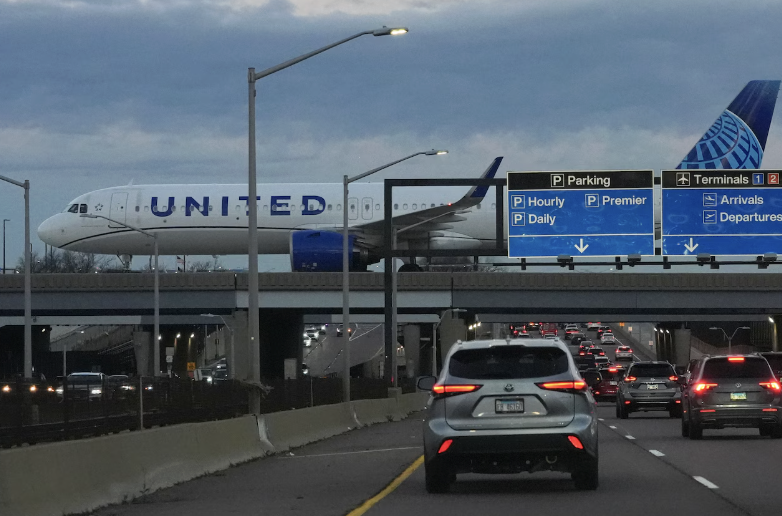
If you’ve been planning a family reunion, winter escape, or long-overdue vacation, it might be time to double-check your travel plans.
The Federal Aviation Administration (FAA) is preparing to slash flight capacity across dozens of major airports, and the ripple effect could touch nearly every traveler in the country.
From longer lines to pricier tickets, this move could make flying a lot less convenient, especially for those who recall when a flight meant dressing up and enjoying a hot meal on board.
What’s Behind the FAA’s Sudden Capacity Cuts?
The FAA is facing a critical shortage of air traffic controllers, many of whom are working without pay due to ongoing budget disputes and staffing challenges. To keep the skies safe and manageable, the agency is proposing a 10% reduction in flight capacity at 40 “high-volume” airports across the country. This means fewer flights taking off and landing, which could translate to more delays, cancellations, and crowded terminals.
Transportation Secretary Sean Duffy announced that these cuts will be phased in starting Friday, with airlines expected to reach the full 10% reduction by next week. While the FAA hasn’t officially published the final list, a proposed roster provided to CBS News gives people a good idea of which airports are in the crosshairs.
Airports Potentially Affected by FAA Reductions
The preliminary list includes every major airport you might think of for holiday travel. The nation's busiest hubs are all expected to face cuts:
East Coast: All three New York area airports (JFK, LaGuardia, Newark), plus Boston Logan, Washington DC area airports (Reagan National, Dulles, BWI), Philadelphia, and Miami.
West Coast: Los Angeles International, San Francisco, Seattle-Tacoma, Portland, San Diego, and Oakland.
Major hubs: Atlanta Hartsfield-Jackson, Chicago O'Hare and Midway, Dallas-Fort Worth, Denver, Houston's two airports, Charlotte, and Phoenix Sky Harbor.
Popular destinations: Las Vegas, Orlando, Tampa, Fort Lauderdale, and Honolulu are also on the list.
What a 10% Cut Really Means for Travelers
A 10% reduction in capacity doesn’t just mean fewer flights—it can also mean longer lines, more crowded waiting areas, and a higher chance of delays or cancellations. Airlines will have to decide which flights to cut, and they may prioritize routes with lower demand or less profitability. If you’re flying to or from a smaller city, or if you’re booked on a less popular time slot, your flight could be at greater risk.
Cargo airports, such as Louisville, Memphis, and Anchorage, are also on the list, which could have a knock-on effect on package deliveries and supply chains. And if you’re one of the lucky few who fly out of Teterboro on a private jet, even you might not be immune!
For those who remember the golden age of air travel, today’s flying experience already feels a bit more like a cattle call than a glamorous adventure. These new cuts could make things even trickier:
- More Delays and Cancellations: With fewer flights, airlines have less wiggle room to rebook passengers when things go wrong.
- Higher Prices: Reduced capacity often means higher fares, especially on popular routes.
- Crowded Airports: Fewer flights don’t always mean fewer people—especially if everyone’s trying to get on the same remaining flights.
- Longer Waits: Security lines, boarding, and baggage claim could all take longer as airlines and airports adjust to the new normal.
How Flyers Can Prepare for the Upcoming Changes
Don’t let this news ground your travel dreams! Here are some tips to help you navigate the turbulence:
1. Book Early and Be Flexible: The earlier you book, the better your chances of snagging a seat. If you can, be flexible with your travel dates and times.
2. Sign Up for Alerts: Most airlines and travel apps offer real-time notifications about delays, cancellations, and gate changes.
3. Consider Alternate Airports: If you live near more than one major airport, check flights from all of them. Sometimes a short drive can save you hours of hassle.
4. Pack Smart: With the potential for delays, keep essentials (medications, snacks, chargers) in your carry-on.
5. Stay Informed: Check the FAA and airline websites for the latest updates, and don’t hesitate to call customer service if you have questions.
Also read: As shutdown continues, key deadlines approach for healthcare and travel
Why the FAA Is Taking This Route Now
The air traffic controller shortage isn’t new, but it’s reached a tipping point. Controllers are highly trained professionals, and it takes years to bring recruits up to speed. Budget disputes and hiring freezes have exacerbated the situation. The FAA’s decision to cut capacity is a last-resort measure to keep flights safe and manageable while they work on a long-term fix.
The good news is that these cuts are intended to be temporary. The FAA, Department of Transportation, and airlines are all working to resolve the staffing crisis and restore normal service as soon as possible. In the meantime, a little patience and flexibility can go a long way.
Read next:
- The cheapest days to book your holiday flights, according to Google
- Planning your next getaway? Check these 18 senior travel discounts before you book!
- Grandma’s quick action helps avert disaster mid-flight
Are you worried about your upcoming travel plans? Have you already experienced delays or cancellations at one of these airports? Or do you have a tried-and-true travel tip to share with us?






